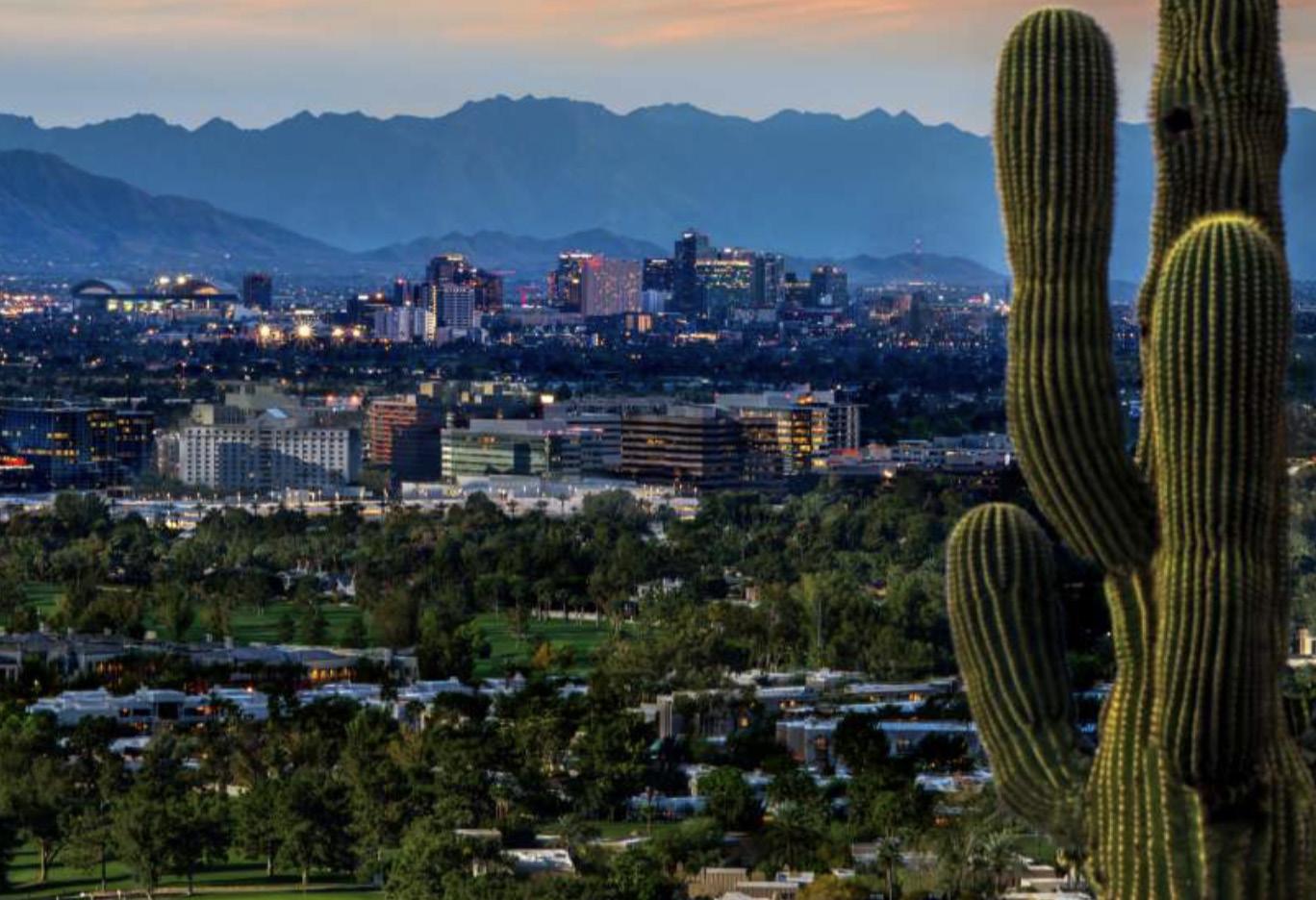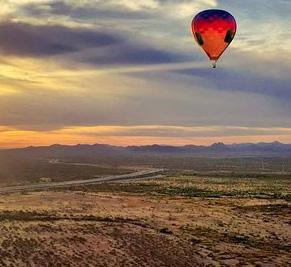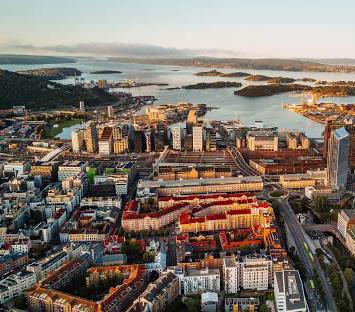

Getaway

Why should we travel?
I’ve been putting my passport to good use lately. I use it as a coaster and to level wobbly table legs. It makes an excellent cat toy. Welcome to the pandemic of disappointments. Canceled trips, or ones never planned lest they be canceled. Family reunions, study-abroad years, lazy beach vacations. Poof. Gone. Obliterated by a tiny virus, and the long list of countries where United States passports are not welcome. Only a third of Americans say they have traveled overnight for leisure since March, and only slightly more, 38 percent, say they are likely to do so by the end of the year, according to one report. Only a quarter of us plan on leaving home for Thanksgiving, typically the busiest travel time. The numbers paint a grim picture of our stilled lives. It is not natural for us to be this sedentary. Travel is in our genes. For most of the time our species has existed, “we’ve lived as nomadic hunter-gatherers moving about in small bands of 150 or fewer people,” writes Christopher Ryan in Civilized to Death. This nomadic life was no accident. It was useful. “Moving to a neighboring band is always an option to avoid brewing conflict or just for a change in social scenery,” says Ryan. Robert Louis Stevenson put it more succinctly: “The great affair is to move.” What if we can’t move, though? What if we’re unable to hunt or gather? What’s a traveler to do? There are many ways to answer that question. “Despair,” though, is not one of them. We are an adaptive species. We can tolerate brief periods of forced sedentariness. A dash of self-delusion helps. We’re not grounded, we tell ourselves. We’re merely between trips, like the unemployed salesman in between opportunities.
We pass the days thumbing though old travel journals and Instagram feeds. We gaze at souvenirs.All this helps. For a while. We put on brave faces. “Staycation Nation,” the cover of the current issue of Canadian Traveller magazine declares cheerfully, as if it were a choice, not a consolation. Today, the U.S. Travel Association, the industry trade organization, is launching a national recovery campaign called “Let’s Go There.” Backed by a coalition of businesses related to tourism—hotels, convention and visitor bureaus, airlines—the initiative’s goal is to encourage Americans to turn idle wanderlust into actual itineraries. The travel industry is hurting. So are travelers. “I dwelled so much on my disappointment that it almost physically hurt,” Paris-based journalist Joelle Diderich told me recently, after canceling five trips last spring. My friend James Hopkins is a Buddhist living in Kathmandu. You’d think he’d thrive during the lockdown, a sort-of mandatory meditation retreat. For a while he did. But during a recent Skype call, James looked haggard and dejected. He was growing restless, he confessed, and longed “for the old 10-countries-a-year schedule.” Nothing seemed to help, he told me.
“No matter how many candles I lit, or how much incense I burned, and in spite of living in one of the most sacred places in South Asia, I just couldn’t change my habits.” When we ended our call, I felt relieved, my grumpiness validated. It’s not me; it’s the pandemic. But I also worried. If a Buddhist in Kathmandu is going nuts, what hope do the rest of us stilled souls have? I think hope lies in the very nature of travel. Travel entails wishful thinking. It demands a leap of faith, and of imagination, to board a plane for some faraway land, hoping, wishing, for a taste of the ineffable. Travel is one of the few activities we engage in not knowing the outcome and reveling in that uncertainty. Nothing is more forgettable than the trip that goes exactly as planned. It’s not the place that is special but what we bring to it and, crucially, how we interact with it. Travel is not about the destination, or the journey. It is about stumbling across “a new way of looking at things,” as writer Henry Miller observed. We need not travel far to gain a fresh perspective. No one knew this better than Henry David Thoreau, who lived nearly all of his too-short life in Concord, Massachusetts. There he observed Walden Pond from every conceivable vantage point: from a hilltop, on its shores, underwater. Sometimes he’d even bend over and peer through his legs, marveling at the inverted world. “From the right point of view, every storm and every drop in it is a rainbow,” he wrote.
Thoreau never tired of gazing at his beloved pond, nor have we outgrown the quiet beauty of our frumpy, analog world. If anything, the pandemic has rekindled our affection for it. We’ve seen what an atomized, digital existence looks like, and we (most of us anyway) don’t care for it. The bleachers at Chicago’s Wrigley Field; the orchestra section at New York City’s Lincoln Center; the alleyways of Tokyo. We miss these places. We are creatures of place, and always will be. “One of the great benefits of travel is meeting new people and coming into contact with different points of view,” says Pauline Frommer, travel expert and radio host. So go ahead and plan that trip. It’s good for you, scientists say. Plotting a trip is nearly as enjoyable as actually taking one. Merely thinking about a pleasurable experience is itself pleasurable. Anticipation is its own reward. I’ve witnessed first-hand the frisson of anticipatory travel. My wife, not usually a fan of travel photography, now spends hours on Instagram, gazing longingly at photos of Alpine lodges and Balinese rice fields. “What’s going on?” I asked one day. “They’re just absolutely captivating,” she replied. “They make me remember that there is a big, beautiful world out there.” Many of us, myself included, have taken travel for granted. We grew lazy and entitled, and that is never good. Tom Swick, a friend and travel writer, tells me he used to view travel as a given. Now, he says, “I look forward to experiencing it as a gift.”

Interview with Trisha Velarmino

Trisha Velarmino is one of those people who gave up their comfortable life to travel the world. Holding a fabulous job in the Fashion Industry after studying Arts Management in Manila and Fashion Communications in Milan, Trisha lived a fairly extravagant life, though it was the realization that she wanted to travel while she was young, fit and able which was behind her decision to leave it all behind. Born and raised in the Philippines, traveling the world freely is more challenging for Trisha than for most, though if you think the limits on her passport would stop her from exploring the world you would be wrong. The Philippine passport may come with many restrictions, though this incredibly inspiring young woman is on a mission to prove to the world that you can go backpacking and travel full time even if you’re not from the UK, EU, US, AU or Canada. She is currently working, teaching and volunteering around South America making the most out of the continents 6 visa free countries (for Filipinos), proving to the world as she goes that travel truly is possible, no matter where you come from or which passport you hold.
Q1 Your current mission is to visit all visa free countries for Filipinos, what are these countries?
A: It’s a long list but it’s scattered. For example, in Europe, Filipinos can basically only visit one country without a visa, though South America allows us to travel freely to 6 out of 13 countries, which is why I have chosen to base myself here. Traveling slowly throughout South America is geographically easier and hassle-free for me.
Q2: What inspired you to start travelling?
A: Other travelers. When I first went to study abroad in Europe, I met many nomads and backpackers who were travelling long-term. At the time I thought “is that even possible? Can you do that? Isn’t that tiring?” I mean, this means they move from country to country every month! Who does that?!
At first it was crazy hearing about this lifestyle which was so foreign to me, however after listening to someone’s stories for long enough you will think anything is possible, and it was these stories which made me jump into a life of nomadic travel myself.
Q3: What do you love the most about travelling?
A: Learning about a new culture, language and how people on the other side of the world live. These learning experiences inspire me more than your regular tourist spots.
Q4: When is the right time to travel the world?
A: Tomorrow. Next week. You tell me. I don’t buy people’s excuses when it comes to waiting for the “right time” to travel: “I don’t have the money,” “I need to save,” “What if it doesn’t work out?” are some of the examples. I came here unexpectedly. I experienced a bad break up and had to continue travelling no matter what. At least that’s what I told myself. I kept thinking of what my friends and family would think if I just came back home. “So you run off with a guy and it turned out to be unsuccessful. What a waste of time.” I left everything to travel with him and I couldn’t bear what everyone would think if I don’t carry on.
Q5: How do you afford to travel – are you rich?!
A: The Universe is limitless, abundant and strangely accommodating. I came to South America with nothing. It was then that I learned how to maintain a blog, transform it into an online business and actually earn money from it. Traveling full time taught me that I can work online, and it was necessary to make this happen if I wanted to keep traveling. On top of the blog, I am currently working as a social media manager for a US-based company, and have been for over a year now! I also took my TEFL exam to be able to teach English abroad. In order to get free food and accommodation along the way I volunteer, stay with local families, utilize Couchsurfing, house-sitting and au pairing.
Q6: One thing which you don’t like about travelling?
A:Privacy. I am not that sensitive with personal space but there are times when I just want to shut down from the world and meditate. I haven’t done this in a while because I am always staying in a dormitory or a shared room. Of course, I don’t have the right to complain. It’s usually for free! Good thing my travel blogging skills help me land a vacation room every once in a while. I maximise my privacy when given a chance to stay in a complimentary hotel room. I also think this is the best part of my job!

Traveling Essentials










Phonix, Arizona
Why should you visit?
Phoenix is the capital city of Arizona and is located in the central region of the state. People may know it for its year-round sun, desert beauty, and world-class resorts and golf, but as the fifth-largest city in the U.S., it also offers sophisticated urbanscapes, southwest culture and lots of outdoor adventure. Sometimes, bigger really is better. Phoenix (the “Valley of the Sun” to locals) invites you to enjoy major destinations for recreation and relaxation, must-visit venues in the culinary and cocktail kingdoms, and long-standing arts, civic and cultural institutions. And that just scratches the surface of things to do in Phoenix. Arizona has cherished landscapes to explore and fun destinations to discover in every area of the state, from urban favorites to rural surprises. Arizona is the 6th largest state in the U.S., so there are a lot of places to experience. No worries, we can help figure where to start your adventure. It’s true, Phoenix in the summertime can be scorching hot. But, during the spring, fall and winter, Phoenix, Arizona is a great place to visit. There’s plenty to do outside, including hiking, biking and golfing. In addition, Phoenix has several unique attractions that you won’t find anywhere else in the world. For example, the Musical Instrument Museum and the Desert Botanical Garden. Phoenix is one of the best places in the world to live if you love the outdoors. Plus, if you like to spend your time in the sun, you’ll definitely get your fill. There are hiking trails, mountains, deserts, and lakes all within a short driving distance from Phoenix. Arizona is one of the most scenic places in the world and you can spend your days exploring all the natural wonders it has to offer. Certainly, try out South Mountain Park. It’s located in south Phoenix and there are tons of trails perfect for any skill level. It’s a great way to get out, stay fit and explore. Likewise, check out Camelback Mountain. Also, there are many golf courses in and around Phoenix. And, if you are looking for family activities, try a pool or waterpark. The outdoors activities in Arizona, specifically Phoenix are endless. Whether you’re looking for a strenuous adventure or something a little more leisurely you will find it here.





Desert Botanical Garden
The Desert Botanical Garden (DBG) is an urban oasis amid the Phoenix Sonoran Desert. DBG is a living museum of over 50,000 plants representing more than 4,000 different species. In addition, they are plants from all over the world and has one of the largest collections of cacti and succulents in the US. Complementary to our diverse plant species, our workforce consists of staff members of different ethnicities, genders, colors, ages, races, religions, abilities, national origins, gender identities and sexual orientations.The best times to visit are in the spring and fall. During these cooler seasons, it’s a great place to do some walking and there are plenty of paths to choose from. There are also gardens to explore, like the Cactus Flower Garden, Desert Lily Garden, and the Hummingbird Garden (filled with plants that hummingbirds love). Additionally, if you’re lucky, you might also spot some of the garden’s wild residents.It is 1 of 24 botanical gardens accredited by the American Alliance of Museums (formerly American Association of Museums). A visit to the Desert otanical Gardens is a must for nature lovers!
Hole in the Rock
Explore this 0.3-mile out-and-back trail near Phoenix, Arizona. Generally considered an easy route, it takes an average of 7 min to complete. This is a very popular area for hiking and walking, so you’ll likely encounter other people while exploring. The trail is open year-round and is beautiful to visit anytime. Dogs are welcome, but must be on a leash. Enjoy breathtaking views from the top of this unusual rock formation in Phoenix’s Papago Park after an easy 10-minute hike from the parking lot. Drop by right before sunset for milder temperatures and an even more stunning vista. The place can get quite crowded at this time of day, though. You can also picnic in the shade or visit other must-see attractions within Papago Park, such as Phoenix Zoo and the Desert Botanical Garden. There are other trails in the park that are great for walking or hiking. If you’re traveling in the warmer months, bring plenty of water to endure the desert climate. Visitors to Hole in the Rock can access the site via a short, scenic trail that winds its way through Papago Park. The trail offers a stroll through desert vegetation and glimpses of native flora and fauna, making it a popular destination for hikers, nature enthusiasts, and photographers alike.
Morning Hot Air Balloon Flight Over Phoenix
A drive through the Sonoran Desert just doesn’t do it justice—the desert expands over 100,000 square miles (260,000 square kilometers) total. One of the best ways to get the views you’re hoping for is a hot-air balloon ride, and this morning tour from Phoenix gets you up in the air with an FAA-licensed pilot .Once you arrive, your crew for the day gets your balloon ready to go. Your FAA-licensed pilot makes sure you have a safe ride up in the air. Take off and fly up to take in views over the Sonoran Desert. Catch views of the beautiful landscape, cacti, wildlife, and sun as it rises for the morning. Afterward, back on the ground, enjoy a Champagne breakfast, and chat about your flight experience. Your hot-air balloon ride tour ends with hotel drop-off (if you’ve chosen to upgrade), or right where you are.
Paris, France
Why should you visit?
Paris, France’s capital, is a major European city and a global center for art, fashion, gastronomy and culture. Paris is a diverse and sophisticated city that appeals to the wealthy but can also be enjoyed on a budget. In addition to the Eiffel Tower, Paris has countless other gorgeous landmarks and monuments that add to the beauty of the spacious boulevards and their charming cafés. Nothing beats the thrill of seeing the Eiffel Tower and other iconic Paris attractions for the first time. But there are plenty of reasons to visit Paris beyond just the famous sites. Almost 150 other museums and monuments offer exhibits on every topic you can imagine. Be sure to also look at art on the streets - everything from classical sculpture to the latest creations by sometimes-edgy street artists. Explore the medieval streets of the Marais, lounge on a Paris “beach,” tour the famous Les Puces flea market, or enjoy a concert in a magnificent Paris church or other exciting venue. Luxembourg Gardens and Tuileries Garden are famous for their statues and beautiful flowers. Kids love to sail their toy boats across pools, go for pony rides, and even watch a puppet show. You’ll never run out of fun things to do in Paris - or reasons why you should go for a visit. Aside from all the pleasures of being there, it’s the perfect base for exploring so many other places.


Disneyland Paris
Fans of Mickey can visit Disneyland Paris which is located 32 km from central Paris, with a connection to the suburban RER A.Disneyland Paris has two theme parks: Disneyland (with Sleeping Beauty’s castle) and Walt Disney Studios. It also has a shopping area called Disney Village. The two Paris Disney parks are located beside each other and do not require additional transportation – it’s only a few minutes’ walk between the two parks. Top attractions are Space Mountain, It’s a Small World and Big Thunder Mountain. Escape to the heart of the Disney, Pixar, MARVEL and Star Wars universes that you love so much. Disneyland Paris is full of activities for all ages and all tastes! Dive into the fun-filled worlds of Pixar movies on attractions such as Crush’s Coaster, Ratatouille: The Adventure, Toy Soldiers Parachute Drop and Cars ROAD TRIP. The bravest among you can even ‘drop in’ on the Twilight Zone Tower of Terror! Before the final credits roll, award yourself a special souvenir from one of our filmtastic boutiques.

Eiffel Tower
What would Paris be without its symbolic Eiffel Tower? Built by Gustave Eiffel to commemorate the centenary of the French Revolution, it is presented at the Exposition Universelle in Paris in 1889. 324 meters high, it is one of the most visited monuments in the world with nearly 7 million visitors a year. The first floor houses the Eiffel Tower 58 which extends over two levels, 58 meters above the ground as its name suggests. On the second floor, the view is the best at 115 meters because you have a diving view on the ground below. Finally on the 3rd floor at 275 meters, you can see what the office of Gustave Eiffel was. For the more adventurous one, it is possible to use the stairs and climb the steps (1,665 to the summit). The ascent of the Eiffel Tower is a must to enjoy the magnificent view of Paris.

Louvre Museum
The Louvre is the most visited art museum in the world. Located in the heart of Paris, this historic building is a former royal palace, with an area of 210,000 square meters including 60,600 for the exhibitions. The museum is housed in the Louvre, originally a fortress built in the late 12th century under Philip II. The remains of the fortress are visible in the basement of the museum.
The collection is divided into eight departments:
-Egyptian antiquities
-Oriental antiquities
-Greek, Etruscan and Roman
-Islamic Art
-Sculptures of the Middle Ages, Renaissance and Modern Times
-Objects of art
-Paintings
-Graphic arts.
Oslo, Norway
Why should you visit?
Oslo, the capital of Norway, sits on the country’s southern coast at the head of the Oslofjord. It’s known for its green spaces and museums. Many of these are on the Bygdøy Peninsula, including the waterside Norwegian Maritime Museum and the Viking Ship Museum, with Viking ships from the 9th century. The Holmenkollbakken is a ski-jumping hill with panoramic views of the fjord. It also has a ski museum. Combining fjord and forest landscapes with high-end architecture and landmarks that bear witness to Norway’s history – Oslo has it all. Nicknamed as The Tiger City (or Tigerstaden), Norway’s capital offers its visitors a taste of Scandinavian traditions and modern life. Norway’s capital is lauded as one of the most walkable, bikeable city centers in Europe, making Oslo tours a particularly appealing way to experience the city. On foot or wheels, follow an expert guide from Oslo’s sprawling sculpture park and impressive waterfront landmarks to locals’ favorite spots for sausages and waffles. Some tours show you the city through the lens of World War II or the Vikings, while others spotlight the Oslofjord. Swim, kayak, or sweat in floating saunas on the pristine urban fjord—or simply admire the bays, beaches, and verdant islands from an electric boat. Oslo’s compact and cute size makes it the ideal destination for a short getaway. You can choose to wheel around the city on a bike, on foot, or by public transportation and you’ll still be able to discover most of the city’s attractions in a day or two. Moreover, combining nature, with culture and modern design, the Norwegian capital will have you covered no matter what you’re looking for. Explore world-class museums in the morning and at night, taste the Nordic cuisine in one of Oslo’s refined restaurants.

Fjord Sightseeing Cruise by Sailing Ship
Discover the tranquil waters of Oslo Fjord on a sightseeing cruise. As you ride around the water, listen to commentary from an onboard guide to learn about OslChoose from one of several different start times, and then head to the pier opposite Oslo City Hall to board your boat. Your cruise takes place on Oslo Fjord, the city’s shimmering expanse of water, which is bordered by rocky shores and islets as well as the urban sights of Oslo. Gaze out at the wooded hills that ring the city, passing through sheltered sounds and winding around small islands speckled with summer vacation homes. Lear about the area—its history and geography— from your onboard guide as you cruise.Oslo is beautifully situated at the head of the Oslo Fjord (Oslofjorden in Norwegian) and is surrounded by forested hills. It’s a stunning city, and the best way to appreciate its beauty is on a relaxing sightseeing cruise. On this two-hour tour, discover the scenery from a sightseeing boat. You’ll sail past numerous islands, including Hovedøya and the Dyna Lighthouse, through narrow inlets and into sheltered bays so that you can capture the capital on camera from different angles. We will pass the Opera House in Oslo, housing The Norwegian National Opera & Ballet ensemble. The spot has been named Kirsten Flagstads place 1 after the opera’s first director Kirsten Flagstad place 1 after the opera’s first director Kirsten Flagstad. It was designed by the architectural firm Snøhetta AS, which won an architectural competition in 2000. A choice of seven departure times gives you excellent flexibility and allows you to easily fit this tour into your Oslo vacation.




Taste of Oslo Walking Tour
Finding the best quality eats can be tricky in an unfamiliar city; avoid disappointment and eliminate the guesswork on this walking tour of Oslo. Uncover local favorites and hidden gems as you stroll the city to sample Oslo’s best cheese, fish, meat, and waffles, along with a few beers and aquavit. Your guide provides insight into local food culture and can offer insider tips for where to continue afterward. Meet your guide and the rest of your group in downtown Oslo. Before embarking upon your tasting tour, there’s time for a visit to a traditional Norwegian clothing (bunad) shop to learn about Norwegian apparel and traditions. Your tour continues to various stops, tasting dishes at each location, such as cheese, fish, and a traditional waffleand-brown-cheese dessert at a small coffee shop. You also have the opportunity to sample some local Norwegian beers at a cozy bar, as well as a taste of aquavit, a strong, flavored Scandinavian spirit. With a full belly (and some insider foodie tips from your guide), your tour concludes in the city center.

